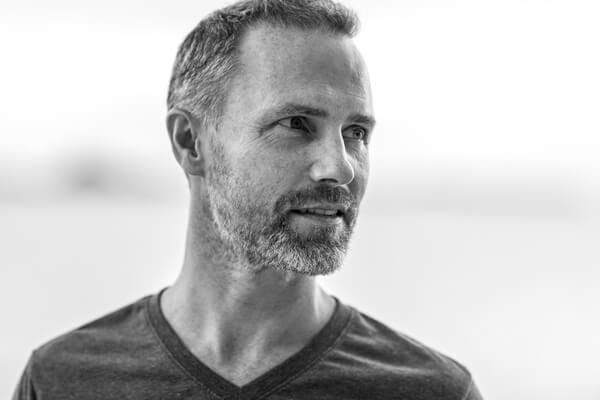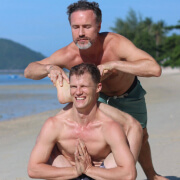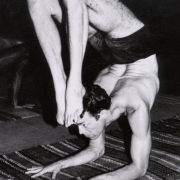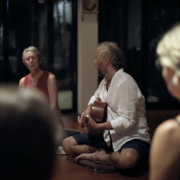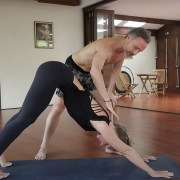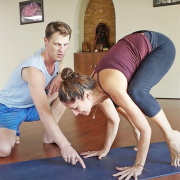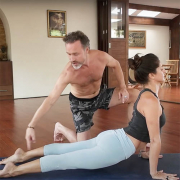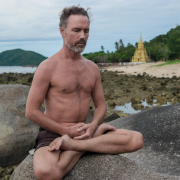 https://samahitaretreat.com/wp-content/uploads/2021/04/SAM_2698-scaled.jpg
1707
2560
Dr. Paul Dallaghan
http://samahitaretreat.com/wp-content/uploads/2024/01/samahita-logo-v2.svg
Dr. Paul Dallaghan2023-06-07 04:54:272024-02-15 09:46:19What is your state of mind? Perhaps yoga has some insight!
https://samahitaretreat.com/wp-content/uploads/2021/04/SAM_2698-scaled.jpg
1707
2560
Dr. Paul Dallaghan
http://samahitaretreat.com/wp-content/uploads/2024/01/samahita-logo-v2.svg
Dr. Paul Dallaghan2023-06-07 04:54:272024-02-15 09:46:19What is your state of mind? Perhaps yoga has some insight!Yoga and Injuries PART TWO: Meditative mind in asana, attitude and engaged participation
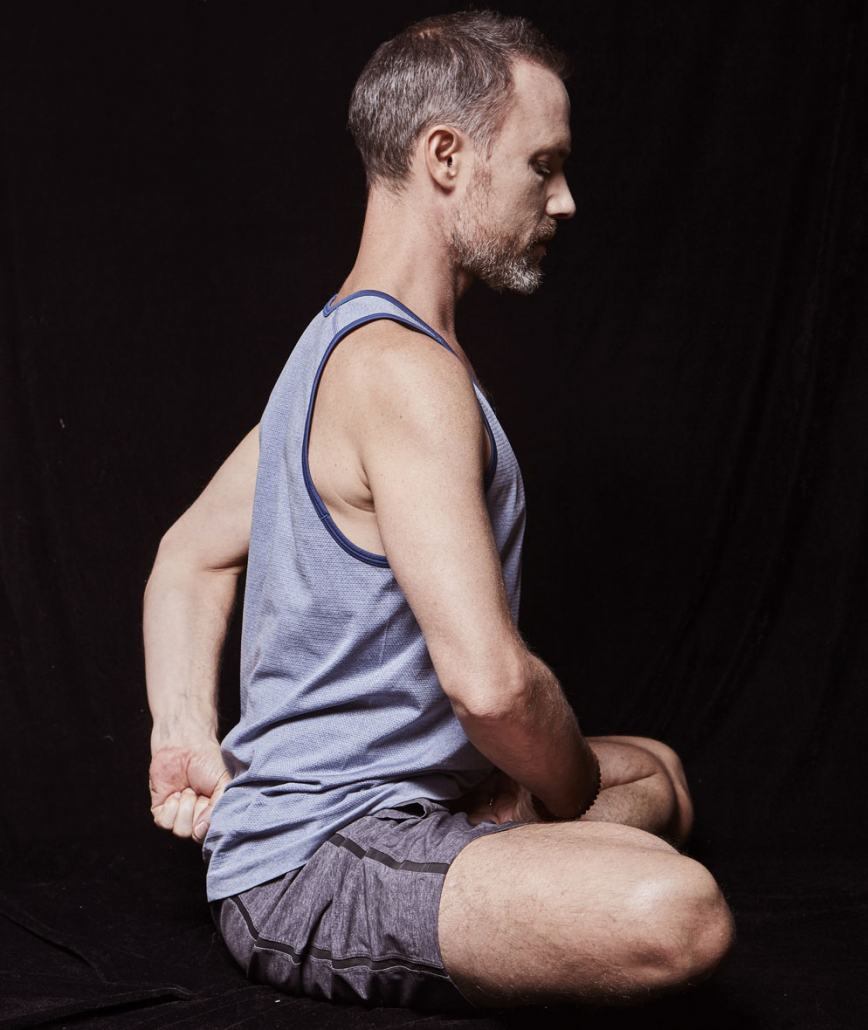
As a yoga teacher, I want to help people with their inner physiological process so they function better, think clearer, behave nicer, express and share cleanly, and treat people better.
INTERNAL FOCUS
You might be moving and bending, but the mind jumps around. And though everyone knows this shouldn’t happen, and everyone emphasizes mindfulness and awareness, in reality people aren’t that aware of where they are focusing. Even if they hope to be aware of where they direct their attention, they don’t have the capacity to direct it because they haven’t been trained. And in our ADD (attention deficit disorder), online every-minute-of-the-day world, this is even more of a problem. If we jump around in our body like we jump around in our mind then we are adding to the inner confusion, and we are missing the connection to working with the body and management of the breath.
As we will see, all this comes together in the physical management of the body, using the pelvic muscles and the lower abdomen; how the lower abdomen is essentially the force of the exhale and how that can feed the inhale and posture. The mental focus brings attention to this same zone, and now there’s a greater uniting of a combined mental and physical force, with breath, and its effect on autonomic function and metabolic efficiency.
AS YOU THINK, SO YOU PRACTICE …… AND YOUR BODY FOLLOWS
Your practice ideally should support your intentions on a physiological level, as well as an anatomical one. The Hatha (Yoga) Pradipika text says: Asana makes you stable (in body and mind), healthy, and feeling of lightness. This must mean that your inner organs are working well and you’re balancing stimulation versus counter stress. The third point is lightness. This is from asana only. If you feel light it’s not that your weight has changed. The feeling of lightness is that there is an increased metabolic efficiency at a cellular level – your respiratory function, mitochondrial activity, production of energy, clearing of waste all perform more efficiently.
If this is so, then the outcome should be that I embody such strength. I exhibit good health across my viscera (internal organs), which are purely managed/directed by my autonomic nervous system. At a cellular respiratory level, I am efficient and I feel good. This does not come just because you went to a yoga class and pushed through it. This comes because you engaged in the appropriate activity, with directed focus, supportive breath, and the teacher is able to guide that. As a teacher, offering modifications is your job; you have the chance to help people self-correct, to offer them proper focused work, to interrupt the rigidity.
If your understanding of that increases through your doing of it, then eventually maybe even a mental grasp of it will come; so similar to how chaos theory works, numerous principles that are in states of different activity or disarray come together and reveal a more powerful outcome.
This takes a bit of time, but that’s the process; this is what’s been developed. So, if I practice yoga, I want to be strong, feel healthy, feel good, feel an uplifted spirit. And such a state is the perfect environment to use the breath to channel finer elements of body and mind into what we would call the internal side, which is what yoga is about, the meditative experience. So how we manage or support ourselves, either against injury or helping a current injury, impacts of course not just the degree of the injury which is usually either limb or joint based, but if done correctly it should impact my inner health, my psychological wellbeing, and therefore serves directly as meditative practice, management, etc.
Over the last hundred years, modern science has made tremendous progress in reducing infectious disease. The population has exploded and we now deal more with what is known as non-communicable disease, non-infectious disease, which is at its root based in a mismanagement of stress. Inflammation is an identifiable marker here. So, though you may not have a physical limb or joint injury, you probably are entering a yoga class with a degree of poorly managed stress, with resultant inflammation, on a physiological level. Therefore, the support of the body and the placement of posture can either improve that condition or unfortunately and surreptitiously worsen your stress load, or at the very least not help it. This, in turn, leaves you compromised on an immune system level and/or prone to compromise in posture/body on the musculoskeletal level, making you more prone to injury. Following the adage, prevention is better than cure, a yoga teacher, therefore, has a very valuable and much needed role and responsibility to teach with an understanding of injury, pain, and disease. And though it’s just a yoga class, this greater understanding can help manage the body posturally, to impact with the breath one’s physiological and psychological state. At the same time, that can be carelessly handled due to lack of experience, knowledge, poor teaching skills, an over-excited approach, focus on the wrong things, and all of these conditions could be worsened.
My own research builds from the burden of non-communicable disease, with stress at the base of that, to look at the effectiveness of yoga practice, particularly regulation of the breath, in managing that stress, to manage this burden which is behind all lifestyle diseases. Such a burden or stress is a somewhat measurable proxy for the internal disturbed state that is contra to the spiritual development. When we talk about managing injury, in one sense, just for daily wellbeing, we want to manage this on a body-health-stress level. But the other sense is that the state of mind or personal spiritual progress – in other words your attitude and how you understand things and look at them – is a key component in all of this. It’s not enough to just do it; we need to do it, understand it, and absorb into it. Otherwise it can be counterproductive. Just because I’m doing it doesn’t mean it is good.
A scientific approach will measure physiological and biological markers as well as psychological surveys. But yoga places things in context, in people’s lives. What is so vastly important, and is highly emphasized by Patanjali and other great teachers, is your approach, your attitude, your sincerity to practice, which I like to personally sum up as a degree of engaged participation. You can’t just take this like a blue pill and expect a result. You need to participate in the administration and digestion of the so-called ‘medicine’.
Dr. Paul Dallaghan’s expertise with breathwork, body and meditative practices comes from three sources: (1) three decades of daily dedicated practice and teaching these techniques; (2) uniquely acknowledged in the Yoga tradition by the title of “Master Yogi-Prānācharya (expert in breath)”, following an immersion in the original culture through one-on-one direct training in practice and study of ancient texts; (3) a PhD in doctoral scientific research at a leading US university (Emory) covering both the tradition and science of yoga and breath practices in terms of stress, health and aging. As a result, Paul occupies a unique space to impart genuine teaching and science on the breath, body, and meditative practices, seen as a Teacher-of-teachers and identified to carry on the tradition of Pranayama. His sincere and ongoing role is to teach, write and research, to help put out experienced and authentic information on these areas of how we live, breathe and be, to help people improve their mental and physical health, and live more fulfilling lives.
For more on his background see his bio
More from the Samahita Blog
